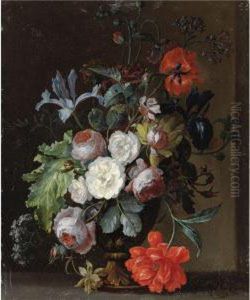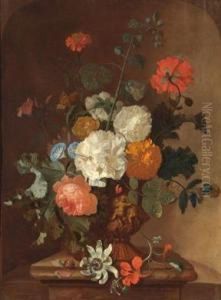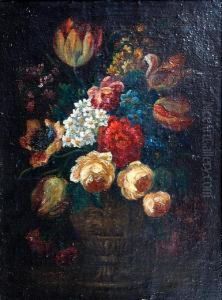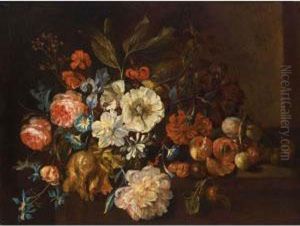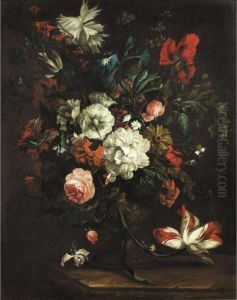Justus van Huysum Paintings
Justus van Huysum, also known as Justus van Huysum the Elder, was a Dutch painter active during the 17th century, a period often referred to as the Dutch Golden Age of painting. Born in Amsterdam in 1659, he became known for his skillful work as a flower painter. His style was influenced by the lush, detailed and realistic floral works that were popular in the Netherlands during this period.
Van Huysum came from a family of artists, and his brother, Jan van Huysum, was also a prominent painter known especially for his floral still lifes and landscapes. Justus, however, should not be confused with Jan, who is often more widely recognized for his contributions to the genre.
The works of Justus van Huysum are characterized by their intricate detail and vibrant colors. He often portrayed a variety of flowers in a single vase, demonstrating not only his artistic skill but also his knowledge of botany. His paintings typically include an array of flowers, some of which would not naturally bloom at the same time, suggesting an idealized or constructed beauty rather than a direct representation of reality.
During his lifetime, Justus van Huysum's floral compositions would have appealed to the Dutch middle and upper classes, who had a keen interest in botany and horticulture, as well as art collecting. These patrons appreciated the ability of artists like van Huysum to capture the transient beauty of flowers and to combine species from different seasons and continents in one harmonious display.
Justus van Huysum passed away in 1716. While his works may not be as widely known today as those of some of his contemporaries, his contributions to the art of flower painting continue to be appreciated by art historians and collectors. His paintings can be found in various art museums and collections around the world, where they are valued for their beauty and historical significance.


